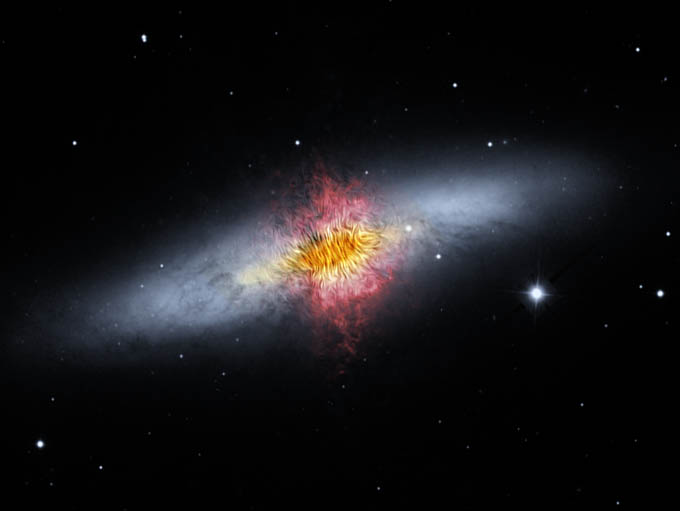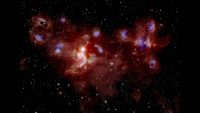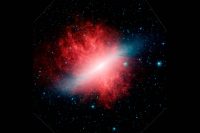Composite image of the Cigar Galaxy, a starburst galaxy about 12 million light-years away in the constellation Ursa Major. The magnetic field detected by SOFIA, shown as streamlines, appears to follow the bipolar outflows (red) generated by the intense nuclear starburst. (NASA/SOFIA/Enrique Lopez-Rodriguez; NASA/JPL-Caltech)
Home Composite image of the Cigar Galaxy, a starburst galaxy about 12 million light-years away in the constellation Ursa Major. The magnetic field detected by SOFIA, shown as streamlines, appears to follow the bipolar outflows (red) generated by the intense nuclear starburst. (NASA/SOFIA/Enrique Lopez-Rodriguez; NASA/JPL-Caltech) Composite image of the Cigar Galaxy, a starburst galaxy about 12 million light-years away in the constellation Ursa Major. The magnetic field detected by SOFIA, shown as streamlines, appears to follow the bipolar outflows (red) generated by the intense nuclear starburst. (NASA/SOFIA/Enrique Lopez-Rodriguez; NASA/JPL-Caltech)
Composite image of the Cigar Galaxy, a starburst galaxy about 12 million light-years away in the constellation Ursa Major. The magnetic field detected by SOFIA, shown as streamlines, appears to follow the bipolar outflows (red) generated by the intense nuclear starburst. (NASA/SOFIA/Enrique Lopez-Rodriguez; NASA/JPL-Caltech)




